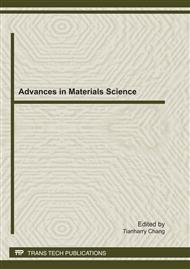p.85
p.89
p.94
p.100
p.105
p.109
p.115
p.120
p.124
Study on the Moisture Distribution within the Wood Treated with Microwave
Abstract:
In this paper, Siberian elm (Ulmus pumila L) which was regarded as our research object was measured with the technology of Nuclear Magnetic Resonance (NMR) before and after being treated with microwave at different periods of time. By comparing the spin - spin relaxation time of hydrogen nuclear (T2) which can reflect the mobility of water molecules, the states and changes of the moisture distribution within the wood in the process of microwave treatment have been analyzed. The results indicate that in the initial stage of drying, the degree of the decline in bound water is greater than that in free water, for there may be a process of the transformation from bound water to free water; With the drying going on, the movement and expulsion mainly happen to free water above the fiber saturation point (FSP); In the later stage of drying, when the moisture content decreases near the FSP, bound water has also begun moving significantly on the expulsion of plenty of free water. In the final stage of drying, the decrease of hydrogen bonds in water molecules resulting from a plentiful reduction in free water, as well as the increased permeability within the wood caused by the microwave drying makes the relaxation time of free water to rise up.
Info:
Periodical:
Pages:
105-108
Citation:
Online since:
September 2011
Authors:
Keywords:
Price:
Сopyright:
© 2011 Trans Tech Publications Ltd. All Rights Reserved
Share:
Citation:


